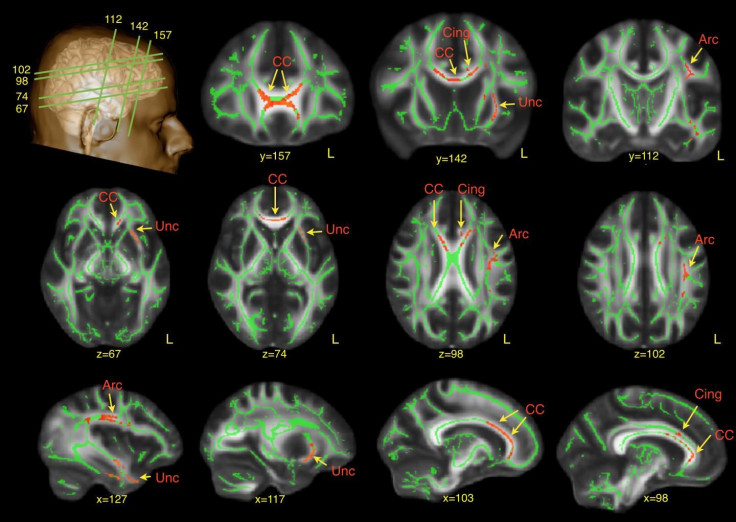Men With Autism Have Unusual Frontal Lobe Connections In The Brain, Diffusion Tensor Imaging Reveals

Autism occurs in every racial and ethnic group, yet boys are four to five times more likely to develop this disorder than girls. A new study examines the brains of adult men with autism, and though it does not explain the gender imbalance, it provides information that may one day lead to better therapies for this disorder. King’s College London researchers discovered adult men with autism spectrum disorder have subtle differences in the white matter of their frontal lobes compared to typical men.
Autism impairs a person’s ability to communicate and interact. Common symptoms include difficulty with social interactions and conversation, obsessive interests, and repetitive behaviors. The term “spectrum” refers to autism's wide range of possible symptoms, skills, and levels of disability. Some children and adults are able to function more or less normally, while others require substantial support to perform even basic activities, such as dressing themselves.
The latest estimates from the Centers for Disease Control and Prevention indicate one in every 68 children has an autism spectrum disorder. The umbrella term includes Asperger syndrome, childhood disintegrative disorder, and pervasive developmental disorders not otherwise specified. To diagnose autism, a specialist would assess a person’s intellectual disability and language impairment.
What New Technology Revealed
Scientists led by Dr. Marco Catani of the Institute of Psychiatry, Psychology & Neuroscience used Diffusion Tensor Imaging, a relatively new brain scan technology, to compare networks of white matter in 61 men with autism and 61 typical men.
White matter coordinates communication across the brain; it consists of large bundles of nerve cells, sometimes compared to telephone lines, which connect different regions of the brain.
Comparing the two sets of scans and then performing a statistical analysis, Catani and his colleagues noticed subtle differences in the brain connections within autistic men’s frontal lobes compared to typical men. This region of the brain is crucial to our ability to develop language and social skills.
Modifications appeared in the arcuate bundle, which is involved in language and connects brain regions involved in understanding words and speech production. Differences were greater in the brains of men with one more severe symptom of autism, “delayed echolalia,” a parrot-like repetition of words or sentences.
The team also detected abnormalities in the anterior portions of the corpus callosum, which connects left and right frontal lobes, and observed underdevelopment of white matter in the left uncinate bundle, which plays a role in face recognition and emotional processing.
These neural differences could be made visible “only with the special research techniques we now have at our disposal,” Catani noted in a press release, adding that future studies are needed to confirm these findings and to study a wider range of autistic spectrum conditions. That said, these findings confirm white matter differences persist into adulthood as some past studies have suggested.
Catani added the differences are not only very subtle but also potentially reversible. “It may one day be possible to stimulate the development of these faulty brain connections,” he said.
Source: Catani M, Dell’Acqua F, Budisavljevic S, et al. Frontal networks in adults with autism spectrum disorder. Brain. 2016.



























